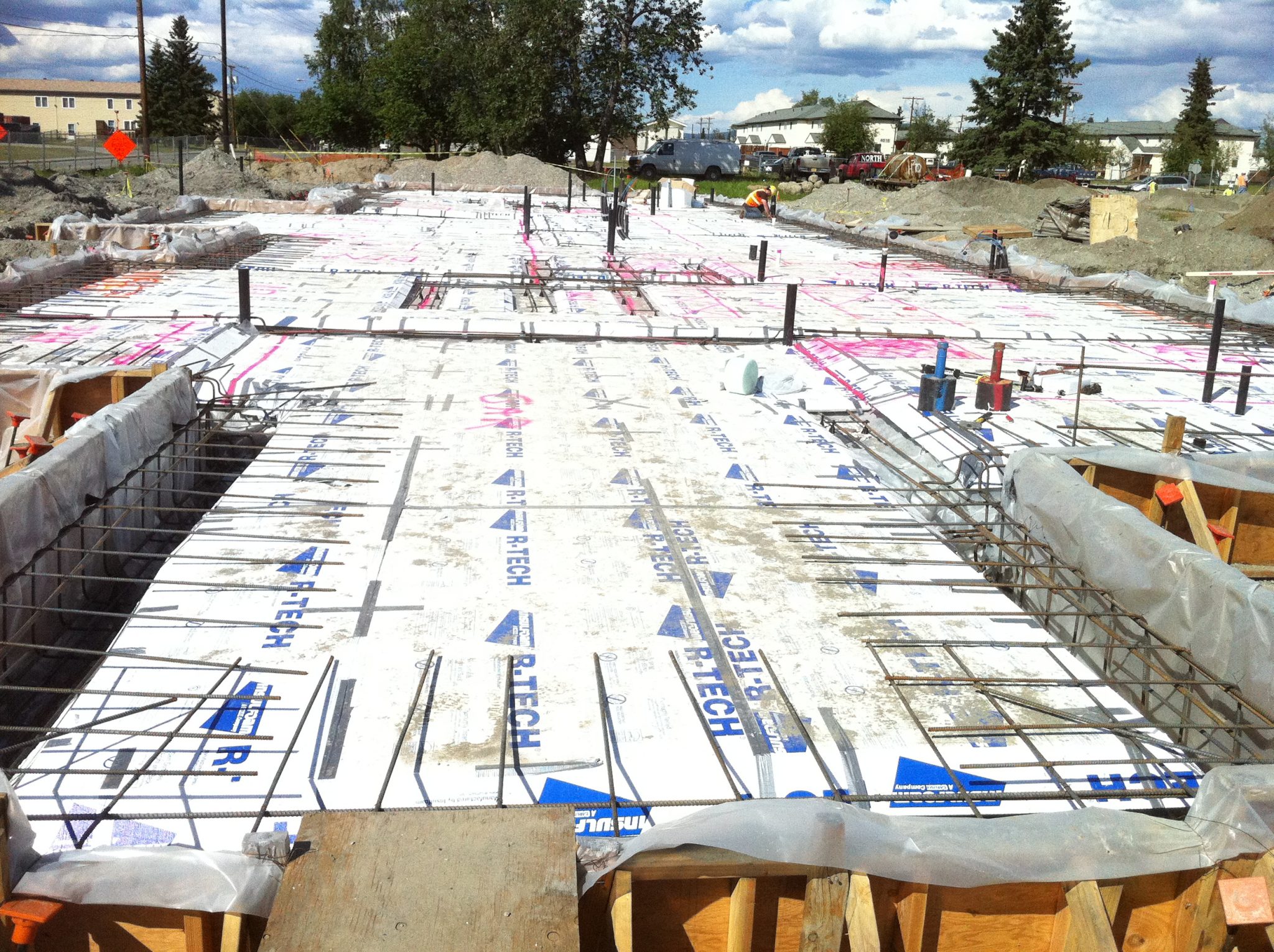Originally published in Structure Magazine, Structural Economics section, April 2014
Structural Economics: cost benefits, value engineering, economic analysis, life cycle costing and more…
Applying the Theory of Plates on Elastic Foundations to Save Material Costs.
Article (pdf) | Digital Edition
A common, simplifying assumption used for specifying polystyrene insulation under concrete slabs results in material costs that are significantly higher than necessary. Using a design equation based on a more rigorous analysis of the design conditions can help avoid over-engineering the insulation and save thousands of dollars on the project.
Rigid foam insulations, such as expanded polystyrene (EPS), have been used successfully under concrete slabs for more than 40 years. Such insulation helps reduce heat loss to the ground in residences, cold storage units, warehouses and other commercial, institutional and industrial structures.
The problem is that designers often do not adequately account for how the concrete slab and underlying subgrade interact. Many designers assume that a concentrated load applied to the slab transfers to the rigid foam subgrade through a triangular load path. This assumption, while not necessarily incorrect, can be very conservative.
Concrete slabs distribute loads in a more even fash- ion, which means that the insulation does not need as high a compressive resistance compared to the typical simplified approach. A more accurate approach to this problem is to use the Modulus of Subgrade Reaction (K) to determine the slab’s deflection and the resultant stress applied to the elastic insulation subgrade. The pressure beneath a given slab under a load can be determined using the following formula, found in the Theory of Plates on Elastic Foundations, as described by Timoshenko and Woinowsky-Krieger:
Pressure on the subgrade = (P/8)√(K/D) Where:
- P = concentrated load on concrete slab in pounds
- K = Subgrade reaction modulus of total EPS insulation in pounds per cubic inch (k/t)
- k = Stiffness of one inch of EPS insulation in pounds per square inch
- t = EPS insulation thickness in inches
- D = Eh3 / 12(1-u2)
- E = Modulus of elasticity of concrete in pounds per square inch (57000√ f’c)
- f’c = specified concrete compressive strength in pounds per square inch
- h = Thickness of concrete slab in inches
- u = Poisson’s ratio for concrete (0.15)
An example illustrates the significant difference in the calculated results.
Take the case of a warehouse with a 6-inch-thick, 2,500-psi concrete slab on 2 inches of EPS insulation with a rated stiffness of 360 psi for one inch. Forklifts to be used in the building impart 8,000 pounds of force at the wheel, which has a 6-inch by 10-inch tire footprint on the slab. If the designer assumes that this load distributes at a 45-degree angle through the slab, the 8,000 pounds ends up distributed over approximately 396 square inches [(6 + 6 + 6)(6 + 10 + 6)] of the insulation’s surface, for an average pressure of 20.2 psi.
Taking into account the fact that concrete slabs distribute loads more evenly, using the Modulus of Subgrade Reaction method, the pressure on the insulation is actually much lower – approximately 1.85 psi. Since EPS insulation rated for 1.85 psi costs about 50% less than other rigid foam insulations rated for the much higher value of 20.2 psi, using the more precise method reduces insulation costs substantially. In fact, the 20.2 psi value is beyond the elastic range of the EPS material, and long-term creep effects must be taken into account when using that design approach. With:
P = 8000 pounds, h = 6 inches, f’c = 2,500 psi,
E = 57,000√ 2,500 = 2,850,000 psi, u = 0.15,
k = 360 psi for 1-inch EPS
K = 360 psi / 2 inches = 180 pci
D = Eh3/12(1-u2) = 2,850,000 (6)3/12(1–(0.15)2) = 52,480,818 lb-in
Pressure on EPS = (P/8)√(K/D) =
8000/8 √(180 / 52,480,818) = 1.85 psi.
The k value can be found by consulting the insulation manufacturer. One EPS insulation brand available throughout the U.S. has k values ranging from 360 to 1860 psi for one inch of insulation thickness. The specific value depends on the product type selected. Note that increasing the thickness of EPS insulation decreases the overall subgrade modulus.
Using the above method to determine the pressure that a slab transfers to the subgrade allows for proper specification of rigid foam insulation and avoids over-engineering the insulation for compressive strength. In the example application discussed in this article, the simplifying assumption of triangular load transfer through a concrete slab results in a compressive force on the insulation 11 times higher than the result from the more rigorous (but not much more complicated) analysis. Specifying higher compressive resistance insulation than necessary not only is overly conservative for the given design, it also does not improve the insulation’s thermal performance, and the cost to the project is excessive and unnecessary. It is a lose-lose scenario.
Article (pdf) | Digital Edition
ARTICLE QUESTIONS
Contact Joe Pasma, PE, Insulfoam Technical Manager
800.469.8870 x104
Ask Joe to Connect With You on LinkedIn | Follow Premier SIPS on LinkedIn




